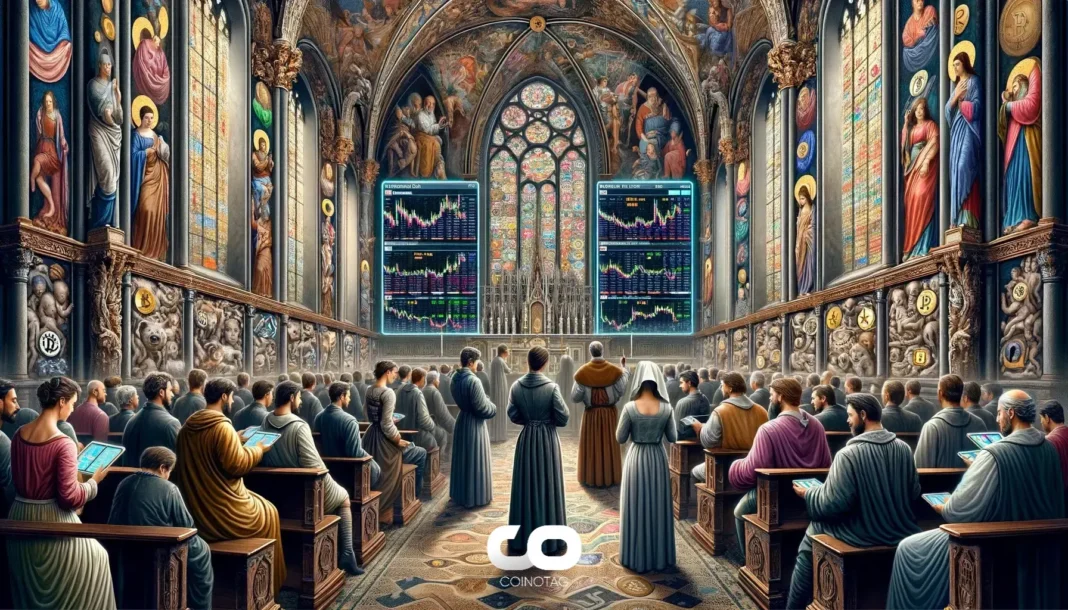- Charles Hoskinson addresses the recent shift in sentiment regarding Cardano’s governance transition to the Voltaire era.
- The current negativity is framed as a healthy outcome of allowing community concerns to be voiced openly and publicly.
- Hoskinson emphasizes that this governance shift paves the way for deeper community engagement and project growth.
The article discusses Charles Hoskinson’s insights on the recent negative sentiment surrounding Cardano, attributing it to the newly established governance framework, Voltaire, while outlining the positive implications for community engagement.
The Transition to Voltaire: A New Governance Framework for Cardano
Charles Hoskinson, CEO of Input Output, recently responded to the increasing negative sentiment shared on social media platforms concerning Cardano’s future. He attributes this criticism largely to the launch of the new governance framework known as Voltaire. On October 10, Hoskinson stated, “You all may have noticed that the Twitter sentiment around Cardano has been more negative lately. This change isn’t a reflection of our project somehow failing, but rather the desired result of Voltaire.” This assertion underscores how the transition into this latest phase of development allows for a more democratic discourse within the Cardano community.
Understanding the Backlash: A Reflection of Community Engagement
The recent concerns regarding Cardano largely stem from two key factors: the underperformance of its native token, ADA, and delays in project development timelines. While such issues might typically be a cause for alarm in other cryptocurrency ecosystems, Hoskinson presents this scrutiny as a manifestation of a new governance model that enables community members to express their grievances effectively. He conveyed, “There have been years of pent-up grievances, unexplored road map items, unfunded growth strategies, and needed partnerships that haven’t been addressed,” emphasizing that these concerns are being brought to light because of Voltaire’s capacity for facilitated discussion and feedback.
Decentralized Governance as a Catalyst for Growth
This shift to a decentralized governance paradigm is part of Cardano’s broader development roadmap, aimed at creating a self-sustaining blockchain ecosystem. Under the Voltaire framework, ADA holders gain significant influence over the platform’s evolution, transitioning from a centralized development model to one where community-driven proposals can be evaluated and funded through an on-chain treasury system. This approach is anticipated to foster a more dynamic environment that is conducive to innovation and development, addressing historic deficiencies in the governance structure.
Transparency in Governance: Cardano’s Competitive Edge
Throughout his commentary, Hoskinson reinforced the value of transparency in governance, contrasting Cardano’s open model with practices observed in other cryptocurrency projects. He criticized other networks for potential “backroom deals and dirty tricks,” advocating for a system based on trust and openness, conducted transparently across more than 100 countries. “The difference between Cardano and the rest of the cryptocurrency space is that we all do this together and out in the open,” he asserted, aiming to cultivate a culture of accountability and collective innovation.
Addressing Community Concerns: A Path Forward
Despite facing criticism, Hoskinson remains confident about Cardano’s trajectory, stating that the network is not in decline but rather thriving due to its strategic governance adjustments. He believes that this decentralized approach will not only allow for better deal-making but also enable the community to tackle critical issues, such as custody and liquidity for Cardano Native Assets (CNAs) and the support of stablecoins. The proactive resolution of these issues is vital for the network’s technical advancement and overall user satisfaction.
Conclusion
In summary, while recent negativity around Cardano underscores the challenges faced during its shift to the Voltaire governance model, it is essential to view these developments through the lens of enhanced community engagement and transparency. By enabling ADA holders to express their concerns and participate actively in governance, Cardano is positioned to not only address past grievances but also foster a sustainable growth trajectory. The ongoing evolution emphasizes that the future of blockchain technology will depend heavily on community participation and decentralized decision-making.







